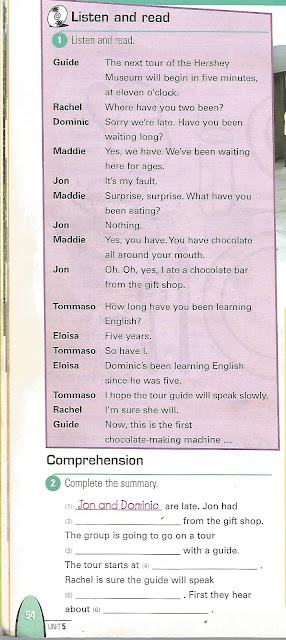PRESENT PERFECT CONTINUOUS

PRESENT PERFECT CONTINUOUS WARM UP Taken from the book Megatrends 6 GRAMMAR Taken from the book English Grammar in Use (Second edition) ACTIVITIES WRITING READING LISTENING Listen the audio https://www.youtube.com/watch?v=YsvmSi7MSsI SPEAKING In pairs organize and present an interview. Use the present perfect continuous
